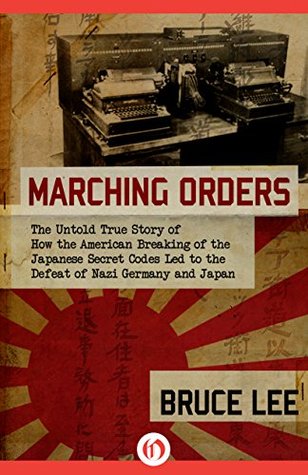More on this book
Kindle Notes & Highlights
by
Bruce Lee
Eisenhower says that even placing the Airborne Army at the disposal of the British Twenty-first Army Group could not overcome the enemy. Thus, “the hope of a quick breaching of his final defenses was defeated.” Even the immobilization of three divisions then in Normandy to provide motor transport for hauling supplies to Montgomery failed to provide adequ...
This highlight has been truncated due to consecutive passage length restrictions.
“We had to revert to our original pre-Dog Day [D day] plan of opening Antwerp before we could deploy in adequate strength in the North,” says Eisenhower. Another problem that arose subsequent to the breakthrough beyond Paris was the establishment of a firm front in southern and southwest France to prevent a large number of enemy troops from concentrating and harassing operations against the Allied right flank. The cheapest protection was to join Devers’s left flank as it came out of the Rhone Valley, reducing German strength “by the amount that we could capture behind the two forces.” However,
...more
This highlight has been truncated due to consecutive passage length restrictions.
a considerable period the bulk of Patton’s forces. Throughout that period all priorities in supplies went to 21st Army Group and the...
This highlight has been truncated due to consecutive passage length restrictions.
Eisenhower says the next stage will be to have Devers move along the Vosges Mountains to the south, Bradley’s Twelfth Army will face the Siegfried Line in the center, and Montgomery’s Twenty-first Army Group, having secured Antwerp, will move its forward units along the Maas River. Says Eisenhower: “It was my one conviction, and it still is, that in order to concentrate north of the Ruhr all the forces needed for a successful invasion of Germany, we must have throughout the rest of the front a very firm defensive line which can be held by minimum forces” (Eisenhower’s emphasis). This line “is
...more
This highlight has been truncated due to consecutive passage length restrictions.
Although it was important to “throw back or destroy the enemy in the south,” the constant buildup was in the north. There the First and Ninth Armies had priority in ammunition, replacements and new units. “Moreover, Bradley definitely limited the time available to Patton for making one more effort to achieve a victory in the Saar Valley.” Patton’s final attack was fixed for December 19, after which, regardless of results, divisions were to be transferred north. The Twenty-first Army Group was meanwhile limited to the defensive along the whole northern flank. The terrain and flooding (caused by
...more
As currently planned, operations will bring us “on to the Rhine at the essential crossing places between Nijmegen and Wesel.” Several other factors are to be considered in carrying out these proposals. Crossing the Rhine on the narrow front of Nijmegen–Wesel is risky. The river and areas on both sides are flooded during the spring. Then there is the extent that subsidiary attacks by Allied forces “can be relied upon to divert enemy forces from the sector of our main attack.” Because of these variants, Eisenhower makes it obvious that no plan can be crystallized at this time “but must await the
...more
this great operation without fear of our flanks and without expending for purely defensive purposes more strength than we can afford.” (Emphasis added.) To Eisenhower, this means the entire front will be divided into three areas of operation. The first will be in the north where “hostile forces are to be defeated west of the Rhine and preparations made for a crossing north of the Ruhr.” The second will be in the center where heavy forces will drive on an axis of advance of Prüm–Bonn in preparation of crossing the Rhine “in support of the northern thrust.” The third area will be south of the
...more
This highlight has been truncated due to consecutive passage length restrictions.
And happen they do. Totally unexpectedly, the Americans will seize an intact bridge across the Rhine at Remagen on March 7. Its location is well to the south and east of the Ruhr. The Americans will then move troops across the river and secure the bridgehead. This means that the American forces in the center suddenly become more capable of advancing into Germany and flanking the Ruhr from the south than can Montgomery from the north. As fate decrees, it will take another three weeks before Montgomery’s forces can cross the Rhine in the north. And in the next forty-eight hours after Montgomery
...more
The truly important point is this: “If a markedly successful Russian offensive is maintained and if the Rhine can be substantially closed, our planned strength should be sufficient.” If more strength is needed, it will take longer to invade Germany and end the war quickly.


